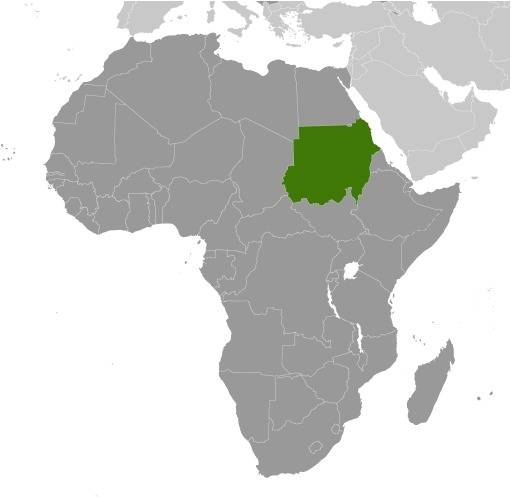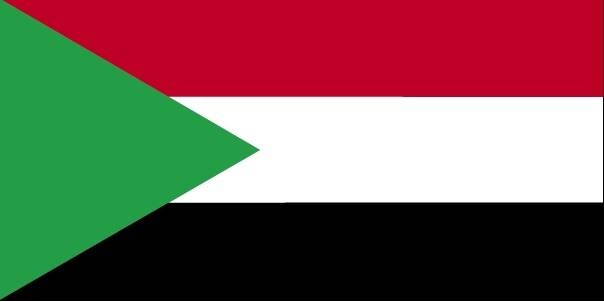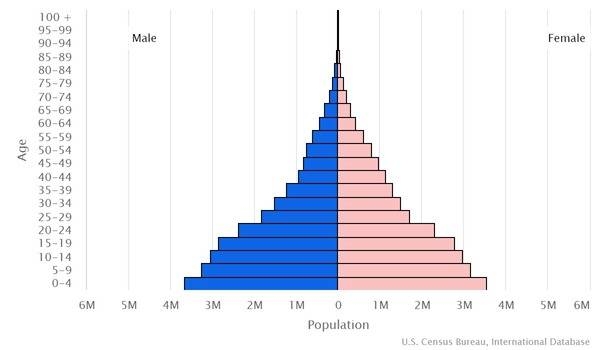Country Summary




Introduction
Background
Between the 14th and 15th centuries much of Sudan was settled by Arab nomads, and between the 16th-19th centuries it underwent extensive Islamization. Following independence from Anglo-Egyptian co-rule in 1956, military regimes favoring Islamic-oriented governments have dominated national politics. A referendum on independence for Southern Sudan was held in January 2011 and indicated overwhelming support for independence. South Sudan became independent in July 2011.
Geography
Area
total: 1,861,484 sq km
land: 1,731,671 sq km
water: 129,813 sq km
Climate
hot and dry; arid desert; rainy season varies by region (April to November)
Natural resources
petroleum; small reserves of iron ore, copper, chromium ore, zinc, tungsten, mica, silver, gold; hydropower
People and Society
Population
47,958,856 (2022 est.)
Ethnic groups
Sudanese Arab (approximately 70%), Fur, Beja, Nuba, Ingessana, Uduk, Fallata, Masalit, Dajo, Gimir, Tunjur, Berti; there are over 500 ethnic groups
Languages
Arabic (official), English (official), Nubian, Ta Bedawie, Fur
Religions
Sunni Muslim, small Christian minority
Population growth rate
2.55% (2022 est.)
Government
Government type
presidential republic
Capital
name: Khartoum
Executive branch
chief of state: Sovereign Council Chair and Commander-in-Chief of the Sudanese Armed Forces General Abd-al-Fatah al-BURHAN Abd-al-Rahman; note – the 2019 Constitutional Declaration established a collective chief of state of the "Sovereign Council," which was chaired by al-BURHAN; on 25 October 2021, al-BURHAN dissolved the Sovereign Council but reinstated it on 11 November 2021, replacing its civilian members (previously selected by the umbrella civilian coalition the Forces for Freedom and Change) with civilians of the military’s choosing; the Sovereign Council currently consists of 5 military-appointed civilians, 5 generals, and 3 representatives selected by former armed opposition groups
head of government: Sovereign Council Chair and Commander-in-Chief of the Sudanese Armed Forces General Abd-al-Fatah al-BURHAN Abd-al-Rahman; Acting Prime Minister Osman HUSSEIN (since 19 January 2022); note - former Prime Minister Abdallah HAMDOUK resigned on 2 January 2022; HAMDOUK served as prime minister from August 2019 to October 2019 before he was kidnapped; he was later freed and reinstated as prime minister on 21 November 2021
Legislative branch
description: according to the August 2019 Constitutional Declaration, which established Sudan's transitional government, the Transitional Legislative Council (TLC) was to have served as the national legislature during the transitional period until elections could be held; as of March 2022, the TLC had not been established
Economy
Economic overview
low-income Sahel economy; one of the world’s major agricultural exporters; shared oil pipeline exports with South Sudan; transitional government increasing human capital investment; food prices hit hard by COVID-19; ongoing Gezira Scheme irrigation project
Real GDP (purchasing power parity)
$176.4 billion (2020 est.)
Real GDP per capita
$4,000 (2020 est.)
Agricultural products
sugar cane, sorghum, milk, groundnuts, onions, sesame seed, goat milk, millet, bananas, wheat
Industries
oil, cotton ginning, textiles, cement, edible oils, sugar, soap distilling, shoes, petroleum refining, pharmaceuticals, armaments, automobile/light truck assembly, milling
Exports
$5.11 billion (2019 est.)
Exports - partners
United Arab Emirates 31%, China 19%, Saudi Arabia 14%, India 12%, Egypt 5% (2019)
Exports - commodities
gold, crude petroleum, sesame seeds, sheep, goats, cotton, ground nuts (2019)
Imports
$9.79 billion (2019 est.)
Imports - partners
China 31%, India 14%, United Arab Emirates 11%, Egypt 6% (2019)
Imports - commodities
raw sugar, wheat, packaged medicines, jewelry, tires, cars and vehicle parts (2019)
Exchange rates
Sudanese pounds (SDG) per US dollar -
Page last updated: Tuesday, August 02, 2022